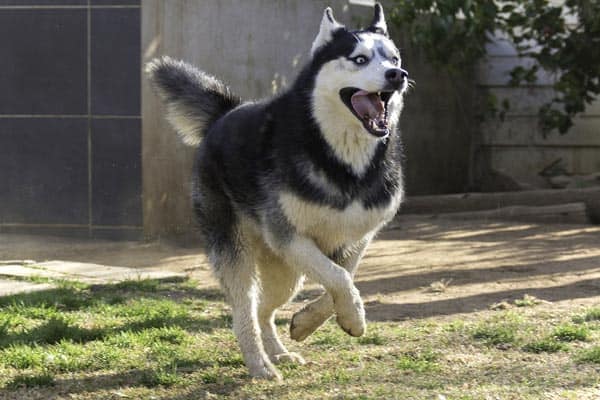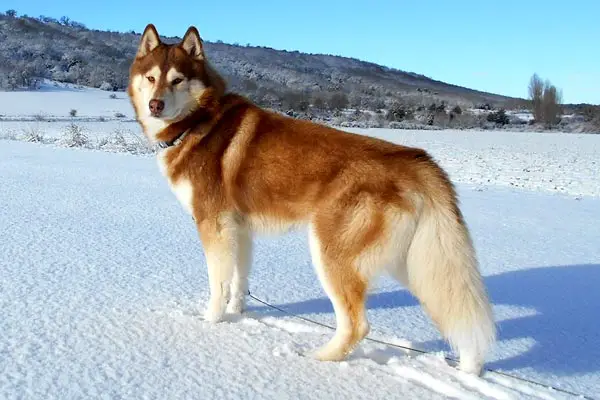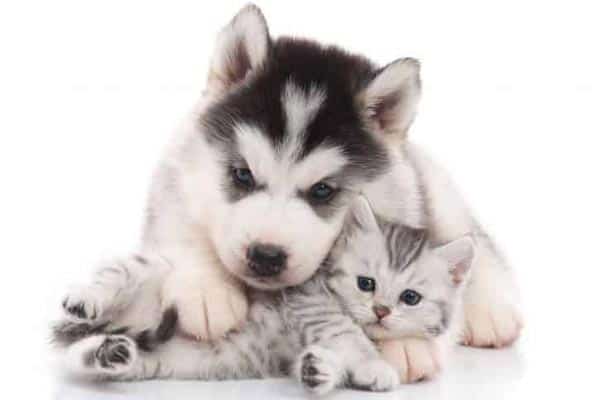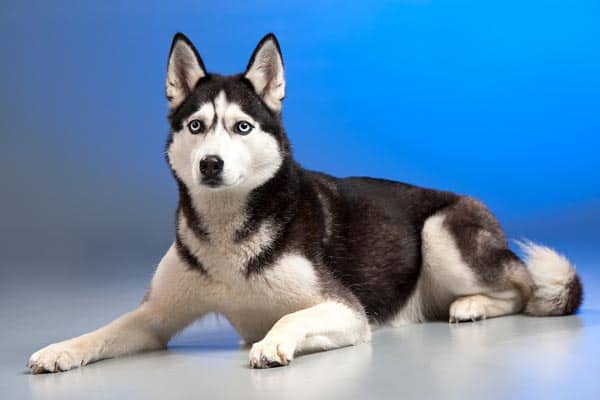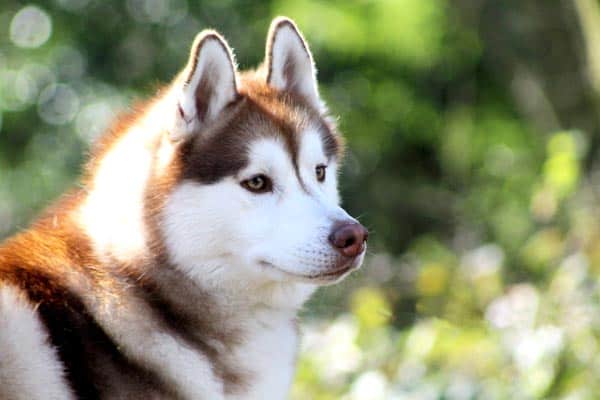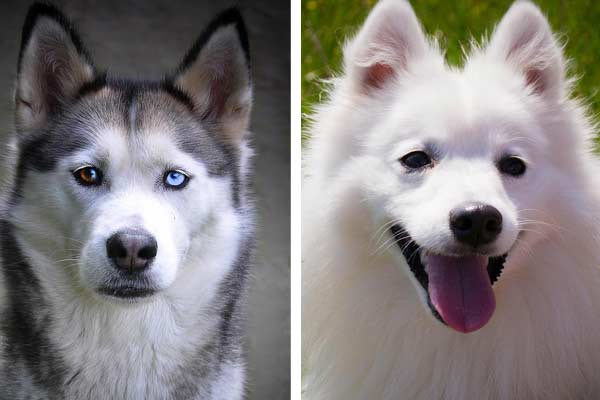Siberian Husky: Meet the Iconic Sled Dog
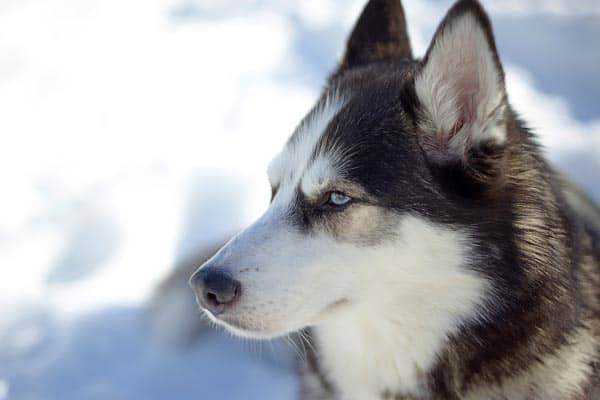
The Siberian Husky is one of those dogs that makes it easy to remember that modern domestic dogs are related to ancient wild wolves.
These dogs, with their keen, bright eyes, thick bushy fur, and upturned ears, epitomize what it means to be a dog.
Siberian Huskies have been living and working alongside humans for millennia, although they have only become popular as companion canines in recent decades.
This article teaches about the Siberian Husky, the iconic sled dog breed.
Siberian Husky
The Siberian Husky is a member of the spitz family of arctic sled dogs. These dogs were once unknown outside of northern Asia, where the nomadic Chukchi people bred and kept them to assist with sledding, hauling, hunting, and herding.
Today, the Siberian Husky is the 14th most popular purebred dog breed in the United States, according to the American Kennel Club (AKC).
Learn About the Siberian Husky Dog Breed
In this YouTube video, you can learn exciting facts about the Siberian Husky dog breed, including the incredible story of a team of Huskies that once saved villagers living in a small remote town!
History of the Siberian Husky
The Siberian Husky Rescue perfectly captures how important “Sibes,” as fans often nickname this dog, have been to humans over the centuries.
Siberian Huskies were only known in Siberia in Russia for many centuries. There, these dogs lived and worked alongside people, even sleeping in the family tent at night and often watching the children while the parents were outside working.
Siberian Huskies became better known in the early 20th century when the first team of Chukchi sled dogs entered the world-renowned Iditarod sled dog races. They placed third, and the rest, as they say, is history.
However, the most famous Siberian Husky feat happened in 1925 when a team of Siberian Huskies saved the inhabitants of a small town called Nome in Alaska by bringing in a supply of diphtheria vaccines.
The best-known dog from this team is Balto, who, together with teammate Togo has been remembered in two films by the same names, as the Cleveland Museum of Natural History recounts.
Siberian Husky Size, Height, and Weight
The Forever Husky rescue charity explains that Siberian Huskies are considered a dog breed of medium size.
They are working sled dogs through and through and are all muscle and sinew beneath their thick coats.
Female adult Siberian Huskies typically weigh anywhere from 35 to 50 pounds and stand about 18 to 20 inches tall (paw pads to withers).
Adult Siberian Huskies will average 45 to 60 pounds and stand 21 to 24 inches tall.
Siberian Husky Personality and Temperament
The Siberian Husky is a very sweet-natured dog that loves people and other dogs.
As the Siberian Husky Club of America makes clear, Siberian Huskies do NOT make good guard dogs – they are far too friendly!
The only thing a Siberian Husky has going for them in the guard dog department is the fact that, to many people, these dogs look like wolves. But that won’t last long once your Husky starts wagging its tail and licking the stranger.
It is essential to understand that this is an ancient dog breed with old instincts, drives, and needs. Siberian Huskies thrive in the company of other dogs and people. They need both to be truly happy.
According to Siberian Husky Welfare Rescue & Rehoming charity, the breed has been identified as one of the 14 most ancient dog breeds on the planet, quickly stretching back anywhere from 3,000 to 10,000 years, depending on the source.
So it won’t work to change your Siberian Husky’s temperament to accommodate your lifestyle or schedule.
Your dog is going to need certain things to cope with a life that doesn’t include a challenging full-time job to do and a pack of up to 20 dogs to do it with.
Siberian Husky Socialization and Training Needs
Siberian Huskies may be very friendly and social, but they are also known to be very independent.
This is in keeping with a dog breed that has been bred to work at a job with other dogs that requires on-the-spot decisions independent of human input.
Here is an example: let’s say there is a team of Siberian Huskies pulling a sled across unknown ice. The pack senses a patch of thin ice. The dogs have to make a split-second decision to alter the course. They do this and their humans trust their judgment.
Now imagine the same Siberian Husky in a pet situation. These dogs, which have been bred for thousands of years to run long distances every single day without stopping, aren’t going to have an innate understanding of commands like “stop,” “heel,” and “stay.”
Similarly, a Siberian Husky that has been bred to live and work in a small, close-knit community of well-known and recognized humans and dogs is not going to make a good guard dog. Guarding behavior is just not in their genes.
For this reason, your Siberian Husky will need a particular type of socialization and training to adapt well to life as a pet companion canine.
In a normal (historical) setting, your Siberian Husky would only be rewarded with food, affection, free time, and rest after doing what their people wanted them to do. Otherwise, why waste precious scarce resources?
This may sound harsh, but it makes perfect sense to the dog. Many “pet” Siberian Huskies become willful and stubborn because they are under-exercised, over-fed, and indulged, and these smart dogs learn how to “work” their owners to get what they want.
This is not to say you should punish your Siberian Husky. This doesn’t work. Only use positive reinforcement like praise, attention, pats, playtime, and appropriate dog treats in training and socialization activities.
But it would be best to teach your Siberian Husky they need to do their work, whatever you are training them to do before they get those positive rewards. This is how to build a loving, trust-based relationship with a Siberian Husky.
Siberian Husky Exercise and Activity Level
Speaking of activity, the Iditarod sled dog race mentioned here earlier than that first team of Siberian Huskies placed third in is 1,000 miles long!
That team of Siberian Huskies had to run 1,000 miles with only one 24-hour stop somewhere along the way.
Today’s Siberian Husky dog teams still have to run that same course, and they do it year after year.
So if you are wondering how much exercise your Siberian Husky will want and need, the answer is “a lot.”
This is also why you can never let your Siberian Husky off the leash in an unfenced open area. Siberian Huskies have an uncontrollable urge to run and run and run. They don’t want to try to escape you – they need to run.
Here again, it is in their genes. If your Siberian Husky gets out, there is a good chance you will never see your dog again.
It is also worth pointing out that Siberian Huskies are expert jumpers, climbers, and diggers and are very intelligent. You must ensure that your backyard is completely escape-proof from every angle, including through the gate.
As Husky Rescue KZN explains, Siberian Huskies need lots of daily exercises and the type of exercise they naturally love to do.
Unless you plan to go for many long runs with your dog, the best way to ensure your Siberian Husky gets enough exercise is to enroll your dog in canine athletics.
The International Siberian Husky Club recommends activities like agility, rally, sledding, and race dog training.
You can also take your dog cycling if you have the right gear. Hiking is a great exercise your Siberian Husky can enjoy with you, and so is trail running.
Siberian Huskies easily learn and perform tricks and have all the natural athletic abilities to learn and execute complex routines. Pretty much whatever you want to teach your dog to do, a Siberian Husky can easily learn.
Siberian Husky Coat Care and Grooming
If there is one fact that all Siberian Husky owners will verify, it is that Siberian Huskies shed….a LOT.
Like most working dog breeds (dogs bred to do specific jobs), the Siberian Husky has a thick, functional double-layer coat.
The inner coat layer (the layer next to the skin) is soft and insulating. It is like the dog’s winter coat.
The outer layer is more coarse and strong and has water-repellant properties. This layer is sometimes called “guard hairs,” which is exactly what the outer layer is designed to do – guard the dog against cold, wet, heat, sunburn, pests, and injury.
It is cold throughout the year in sub-arctic Siberia, where the Siberian Husky breed originated.
So having a thick winter coat on has allowed the Siberian Husky to live and work outdoors with relative safety even in temperatures as low as -58F (-50C).
However, in more temperate climates, Siberian Huskies will shed out the soft undercoat to avoid overheating. This typically happens once to twice per year, depending on your climate.
When it happens, owners call it the “coat blow.” There is hair everywhere, and it lasts for weeks. The best way to control hair shedding is to brush your dog daily from tip to tail. You will also want to keep a vacuum cleaner and de-lint brush handy.
While Siberian Huskies don’t need professional grooming, regular daily at-home brushing and grooming will always be necessary to keep the thick, medium-length coat from tangling and matting.
Once the coat gets tangled, it can be tough to work it out. When a mat develops, it can abrade the skin and lead to infection.
If you live in a warmer climate, you may feel tempted to shave your dog’s coat to reduce the risk of overheating. Never do this!
Not only does your Siberian Husky rely on the coat to prevent sunburn and help control body temperature, but you will destroy all of the coat’s protective properties forever if you shave it even once.
This is because the coat will not grow back in layers. It will grow together with guard hairs and undercoat mixing.
Siberian Husky Health and Life Expectancy
The Canine Health Information Center (CHIC) keeps a database of known health issues identified by dog breed.
All reputable, responsible dog breeders refer to the CHIC database to determine what health tests to do on parent dogs before letting them breed. This pre-screening testing prevents transmitting preventable known genetic health issues to the puppies.
As of the time of publication, Siberian Husky parent dogs should be pre-screened for these health concerns:
- Hip dysplasia.
- Various eye issues.
Siberian Huskies typically live 12 to 15 years.
Is a Siberian Husky the Right Companion Canine for You?
As you know, the Siberian Husky dog is an incredibly ancient breed that has been bred and developed over centuries to do a particular type of work. These dogs are often too much for the casual pet owner to handle.
It is vital to evaluate whether you have the time, energy, and interest in an active outdoor lifestyle to accommodate the needs of a sled dog who is also a pet dog. These dogs cannot be left alone and will be very destructive if neglected, lonely, or bored.
But for the right owner who thinks spending long days running and playing with their dog sounds like paradise, there is no better canine companion than the Siberian Husky.
